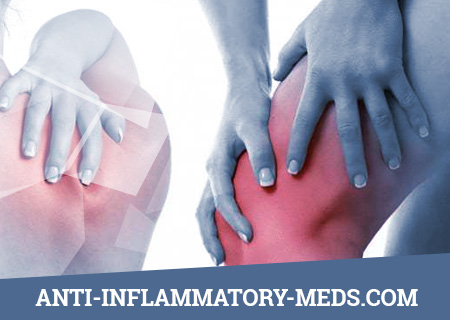What is Acute Infectious Arthritis?
Acute infectious arthritis (septic, purulent) is a joint lesion caused by direct contact of microorganisms in its cavity from any primary foci or with open injury (puncture) of the joint. Etiological factors can be a variety of microbes, but in the first place are staphylococcal (Staphylococcus epidermidis et aureus), streptococcal (group A hemolytic streptococcus, green streptococcus) infection and gram-negative microbes (Escherichia coli, Proteus vulgaris, Klebsiomonella pneumoniaudonella phelefemella pneumonia) . Infectious arthritis can sometimes be caused by direct invasion of microorganisms such as Shigella, Salmonella, Yersinia into the joint.
Causes of Acute Infectious Arthritis
Acute infectious arthritis can occur against the background of furunculosis, peritonsillar abscess, tonsillitis, scarlet fever, middle ear inflammation, pneumonia, infectious endocarditis, with infected wounds of any location, after cystoscopy, operations on the organs of the abdominal cavity and genitourinary system, etc. Sometimes the primary lesion is not detected succeeds. The development of infectious arthritis is prone to old people, people weakened by such common diseases as blood diseases, malignant tumors, PA, SLE, especially if they were on long-term corticosteroid or immunosuppressive therapy, as well as premature babies and alcoholics.
As can be seen from the above, in all these cases we are talking about the development of primary or secondary immunodeficiency.
Symptoms of Acute Infectious Arthritis
In most cases, one or two joints are affected. Arthritis begins acutely with severe pain, swelling of the joint, hyperemia and hyperthermia, only sometimes these phenomena are preceded by a migrating polyarthralgia in a few days. Simultaneously with the development of articular syndrome, hectic fever, chills, and sweating are observed. Leukocytosis with a pronounced shift of the leukocyte formula to the left, an increase in ESR and other indicators of inflammatory activity are detected in the blood. In elderly and extremely weakened patients, arthritis can begin gradually, manifesting with moderate general and local signs of inflammation and acquiring a chronic course. The most commonly affected are the knee and hip joints (usually in children), as well as the shoulder, elbow, wrist, ankle joints, spine and ileosacral joints.
In the study of synovial fluid, high cytosis (20 · 109 / ml) is detected with a predominance (up to 90%) of neutrophils. The liquid is cloudy, its viscosity is reduced, the mucin clot is loose, disintegrating, microorganisms are found in it. At the earliest stages of the disease, synovial fluid sometimes does not have a purulent character, and its repeated aspiration is required to obtain informative results.
Diagnosis of Acute Infectious Arthritis
Radiologically very early reveal epiphyseal osteoporosis, narrowing of the joint space, and with inadequate treatment, such a characteristic characteristic of infectious arthritis as the rapid development under the influence of proteolytic enzymes of pus, destructive changes not only cartilage, but also the skeleton of the joint. The outcome of the disease may be secondary deforming osteoarthritis, which progresses over the years, or bone ankylosis of the affected joint.
Diagnosis of the disease can be untimely, since in the early stages of acute purulent arthritis it is mistaken for traumatic arthritis, an attack of gout, rheumatism, RA, etc. It is important to consider the presence of chills, the range of temperature, the wrong type of fever, leukocytosis. It is necessary to strive for etiological diagnosis of the process. An indicative diagnosis can be made by viewing smears of synovial fluid stained by Gram’s method, and the final diagnosis can be made by isolating a culture of a microorganism from blood or synovial effusion.
Treatment of Acute Infectious Arthritis
It is necessary to immobilize the limb in the extension position for a short period (1-2 weeks); when the patient’s condition improves, they begin to actively develop movements in the joint.
The basis of therapy is antibiotics, which should be prescribed if possible, taking into account the sensitivity of microbial flora to them. With streptococcal and staphylococcal infections, penicillin is used at 250,000 units / (kg · day), on average for adults, 1,200,000,000,000,000 units intravenously, distributing the dose for 4 administrations. The duration of patience is individual – 3-6 weeks. Broad-spectrum antibiotics can also be used, for example, zeporin at 60-100 mg / (kg · day) in 2–3 doses.
With gram-negative intestinal flora, gentamicin is shown at a dose of 3 mg / (kg day), distributed in 3 doses. Treatment is carried out for 2-3 weeks, replacing gentamicin with ampicillin (6-10 g / day in 4-6 doses) or zeporin.
Shown daily joint drainage: aspiration of pus through a wide needle and intraarticular administration of antibiotics. Joint drainage is performed until the synovial fluid is clear.
A positive result of such conservative therapy in most cases should be obtained by the end of the first week, however, active therapy should continue until complete cure. In those cases when the microorganism that caused the development of arthritis is resistant to antibiotics, joint rehabilitation is difficult if after 2-3 weeks of therapy there is no persistent improvement and the risk of developing destructive changes in the joint increases, resort to surgical drainage. The latter is especially indicated in children with lesions of the hip joints. With the onset of joint destruction, it is necessary to surgically remove necrotic fragments and foci of infection in the soft periarticular tissues. All patients with infectious arthritis should be monitored and treated by a surgeon.

